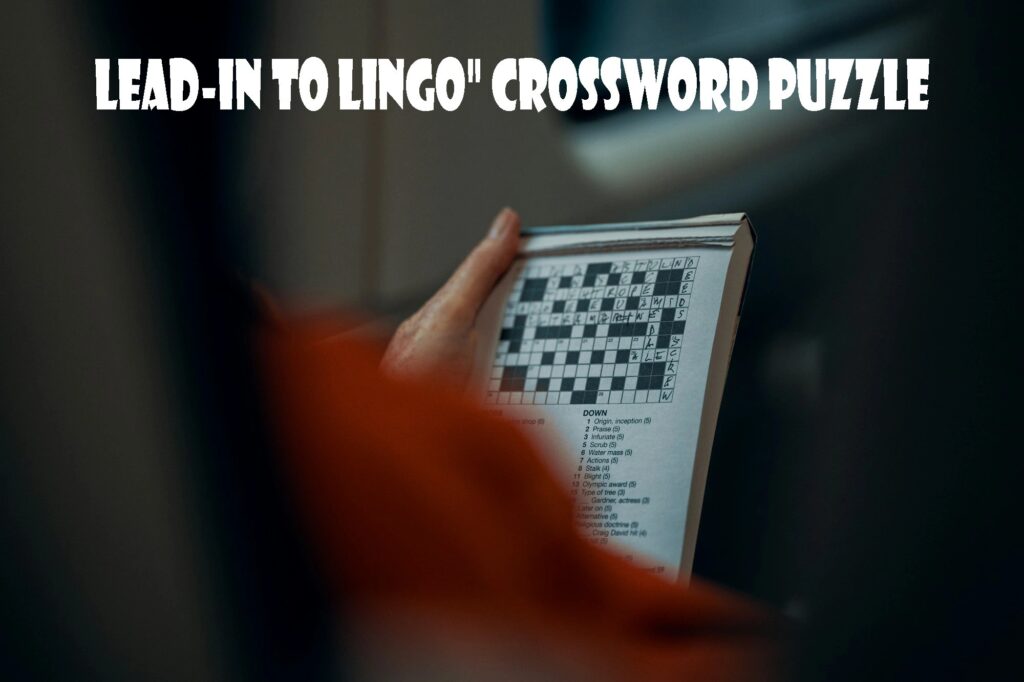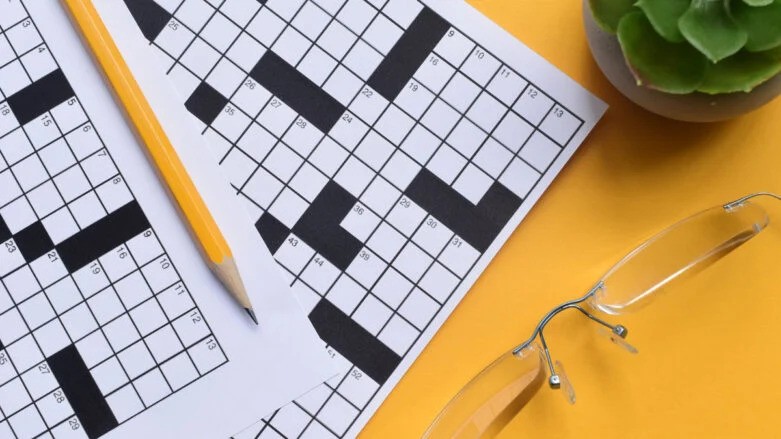Crossword puzzles, with their intricate web of clues and intersecting words have long been a source of fascination for puzzle enthusiasts. Among the myriad of clues that populate these grids, one phrase frequently encountered is lead in to lingo. This seemingly cryptic expression acts as a gateway to unlocking the puzzle solution yet its meaning often remains elusive. In this extensive exploration, we embark on a journey to unravel the mystery behind lead in to lingo delving into the intricacies of crossword puzzle and equipping enthusiasts with strategies to conquer these linguistic challenges. By shedding light on the techniques used to tackle these puzzles, we aim to empower puzzle enthusiasts to emerge victorious in their crossword-solving endeavors.
Table of Contents
ToggleUnderstanding the Crossword Puzzle Landscape
Before diving into the depths of lead in to lingo it’s essential to lay the groundwork by understanding the basics of crossword puzzles. These puzzles typically consist of a grid of squares, accompanied by clues for each entry, both horizontally and vertically. The objective is to fill in the grid with words or phrases that correspond to the given clues, creating a cohesive puzzle solution.
Deciphering the Code: The Crucial Role of Lead-in Words Crossword Solving
Central to solving crossword puzzles is the concept of the lead in to lingo word. In this context, a lead-in word serves as a clue or hint that guides solvers towards the solution. Identifying the lead-in word is akin to cracking a code; once deciphered, it unlocks the rest of the puzzle, paving the way for completion.
Unraveling the Essence of the NYT Crossword

What makes the NYT crossword special is its distinctive blend of wit, sophistication, and cultural relevance. Each puzzle is meticulously crafted by skilled constructors who draw upon a vast array of themes, trivia, and wordplay techniques to create an engaging and satisfying solving experience. From literary references to pop culture allusions, the NYT crossword offers something for everyone, regardless of age or background.
Charting the Legacy: The Enduring Journey of the NYT Crossword
The history of the NYT crossword dates back to 1942 when the first puzzle appeared in the newspaper Sunday edition. Since then, it has become a beloved tradition for millions of puzzle enthusiasts around the world. Over the years, the NYT crossword has evolved and adapted to reflect changes in language, culture, and society, making it a timeless and enduring source of entertainment and intellectual challenge.
Exploring the Essence: The Enigmatic World of the NYT Crossword
The NYT Crossword Experience The New York Times crossword puzzle is renowned for its challenging clues, clever wordplay, and rich cultural references. As one of the most prestigious crossword puzzles in the world, it offers enthusiasts a unique and intellectually stimulating experience. Understanding the history and significance of the NYT crossword can provide valuable insights into why it holds such a special place in the hearts of puzzle aficionados.
Solving Crossword Puzzles Solving crossword puzzles can be both challenging and rewarding, and understanding the lead-in to lingo is a key component of success in this endeavor. To tackle these puzzles effectively, it’s important to have a few strategies up your sleeve.
Strategies for Deciphering Crossword Clues
Solving crossword clues requires a blend of analytical thinking, wordplay skills, and familiarity with common puzzle-solving techniques. Here are some strategies to assist solvers in tackling crossword clues effectively:
What is the Answer of Lead in to Lingo Crossword Puzzle
The crossword clue Lead in to lingo was solved with the answer DUO. This term suggests a pairing or combination of two individuals or elements. In the context of language or communication a duo may refer to a team of two people who work together, a pair of complementary concepts or terms, or a set of two linguistic elements used in conjunction. This answer offers a concise and apt solution to the clue, fitting seamlessly within the structure of the puzzle. If you’re seeking assistance with other clues, you can refer to the NYT Mini Crossword August 27, 2023 Hints page for additional support or explore answers to past puzzles for further insights.
1. Read Carefully: Scrutinize the wording of each clue, as even subtle nuances can offer valuable hints or misdirection.
2. Identify Clue Types: Crossword clues can be categorized into various types, including definition-based clues, wordplay clues, or trivia clues. Recognizing the type of clue aids solvers in determining the appropriate approach.
3. Break Down the Clue: Dissect each clue to identify its components and potential interpretations. Look for keywords, synonyms, indicators of wordplay, or specific references that may lead to the answer.
4. Consider Crossword Conventions: Crossword puzzles often adhere to conventions and patterns, such as common crosswordese, abbreviations, or specialized language.
5. Use Contextual Clues: Take into account the surrounding entries and intersecting letters to narrow down potential answers. Contextual clues can provide valuable insights and aid in eliminating incorrect choices.
6. Practice and Persistence: Solving crossword puzzles is a skill that improves with practice. Embrace challenging clues as opportunities to refine puzzle-solving abilities.
Decoding Lead In to Lingo
Having established a foundation for crossword puzzle-solving let delve into the heart of the matter lead in to lingo. When encountered in a crossword puzzle, this clue presents solvers with a multifaceted challenge. While lead-in typically denotes the beginning or introductory part of something, lingo commonly refers to specialized or informal language within a particular group or profession.
Potential interpretations of lead in to lingo include
1. Prefix: lead in to lingo may function as a prefix preceding the term “lingo” to form a compound word or phrase. Solvers can consider prefixes commonly used in English words, such as “intro,” “pre,” “pro,” or “ante.
2. Introduction to Language: Lead in to lingo might suggest an introductory phrase or expression related to language or communication. Solvers could explore idiomatic expressions, greetings, or introductory phrases in various languages.
3. Preamble or Opening: Alternatively lead in to lingo could refer to a preamble, opening statement, or introductory remark preceding the use of specialized language or jargon.
4. Transitional Phrase: The clue may hint at a transitional phrase or signal preceding the use of specialized terminology or jargon in communication.
5. Initials or Abbreviations: In some instances lead in to lingo might involve interpreting lead-in as an abbreviation or initialism preceding a set of letters representing specialized language or jargon.
Mastering the Art of Crossword Puzzle-Solving

Armed with these strategies and insights, puzzle enthusiasts can embark on their crossword-solving journey with confidence and skill. Whether a seasoned puzzler or a novice, understanding the nuances of lead in to lingo and other crossword clues is essential for success. By honing analytical thinking, wordplay skills, and familiarity with crossword conventions, solvers can tackle even the most challenging puzzles with ease.
As one delves deeper into the world of crossword puzzles it crucial to approach each clue with curiosity, patience, and a willingness to think outside the box. With practice and persistence, unraveling the mysteries of lead in to lingo becomes not only achievable but also immensely rewarding. So, grab a pencil, sharpen your wits, and embark on the crossword-solving adventure that awaits!
Exploring the World of Lingo: A Guide to Mastery
In a world teeming with digital distractions, word puzzles hold a unique allure. Whether a seasoned enthusiast or a newcomer, the challenge of deciphering clues and arranging letters into coherent words captivates minds and sharpens cognitive faculties. Among the myriad of word games available, one gem shines brightly Lingo. This popular game combines elements of strategy, vocabulary, and quick thinking to deliver an engaging and fulfilling experience. In this guide, we venture into the intricacies of Lingo, offering insights and strategies to aid players in mastering this captivating pastime.
Understanding the Lingo Platform
lead in to lingo transcends mere entertainment it serves as a platform for honing linguistic skills and fostering mental agility. Available as both a mobile app and a web-based game, Lingo offers players the opportunity to test their word-solving prowess and compete against others across various puzzles. The game’s premise is elegantly simple: decipher words based on provided clues and a set of partially revealed letters.
The Mechanics of Lingo
At the core of lead in to lingo lies a crossword-style grid awaiting completion with letters. Players are presented with clues corresponding to the words they must uncover. Utilizing deductive reasoning and lexical knowledge, players strategically place letters in the grid to unveil the correct word.
Crossword Challenges

In addition to traditional word puzzles Lingo offers crossword challenges that elevate the gameplay complexity. These puzzles task players not only with deciphering individual words but also with considering how those words intersect and relate within the grid.
Strategies for Success
Though seemingly straightforward, mastering Lingo demands both skill and strategy. Here are some tips to sharpen abilities and achieve success
1. Build Your Vocabulary: A robust lexicon is fundamental to success in Lingo. Familiarize yourself with words of varying lengths and complexity to ease the deciphering of clues.
2. Think Strategically: Approach each puzzle strategically, considering letter placement and potential intersections with existing words in the grid.
3. Use Clues Wisely: Clues are invaluable assets in Lingo. Pay close attention to their wording and leverage them to narrow down possibilities.
4. Practice Regularly: Mastery of Lingo comes with practice. Challenge yourself with puzzles of varying difficulty levels to enhance skills and familiarity with the game’s mechanics.
Unlocking the Lingo Experience
Beyond its gameplay mechanics, Lingo offers an array of features and services designed to enrich the user experience
Customizable Settings: Tailor the Lingo experience to personal preferences by adjusting difficulty levels, selecting preferred puzzle types, and customizing profiles.
Social Sharing: Connect with friends and family through Lingo by sharing successes, competing on leaderboards, or collaborating on puzzles together.
In-Game Rewards: Earn rewards and achievements as progress is made through the game, providing motivation and validation of skills.
Examples of Lingo Success Stories
The world of Lingo boasts numerous success stories from players who have mastered the game
1. The Puzzle Prodigy: Meet Sarah a puzzle prodigy who swiftly ascended the ranks of Lingo through dedication and practice, tackling even the most challenging puzzles with ease.
2. The Strategic Solver: John approaches lead in to lingo with strategic acumen, carefully analyzing clues and considering all possibilities before making moves.
3. The Social Maven: For Emily, Lingo is a social experience, fostering connections with friends and family through friendly competition and collaborative puzzle-solving.
Conclusion
In a world replete with digital distractions Lingo offers a welcome retreat into the realm of words and puzzles. Whether a seasoned enthusiast or a newcomer, there’s something for everyone to enjoy in this captivating game. By embracing strategies outlined in this guide and leveraging resources available on the lead in to lingo platform players can embark on a thrilling linguistic journey. So, dive into the world of Lingo and discover the excitement of word puzzles today!
More Stories
Exploring the World of Interactive Video Games
In the ever-evolving landscape of entertainment, interactive video games stand tall as a pinnacle of immersive experiences. With their ability...
Classic Standard Tournament Chess Set: Gear Up for Success
Chess tournaments stand as the ultimate test of skill, strategy, and mental fortitude, where players compete against each other in...
The Future of Live Streaming Video Games
The live-streaming venture of the gaming industry has become a fascinating phenomenon. Many of the passionate players who are engrossed...
Stay Ahead of the Game: Discover the Top Online Video Game Stores in 2024
The gaming industry has experienced exponential growth in recent years, and with the rise of online gaming, the demand for...
From Jedi to Sith: Unraveling the Choices in Star Wars Role-Playing Games
In the expansive realm of Star Wars role-playing games (RPGs), players are not just mere spectators; they are the architects...
TFT VS LOL: WHICH GAME IS BETTER
Are you wondering which game is better TFT or LOL? Well.. both the games have amazing features and at the...


